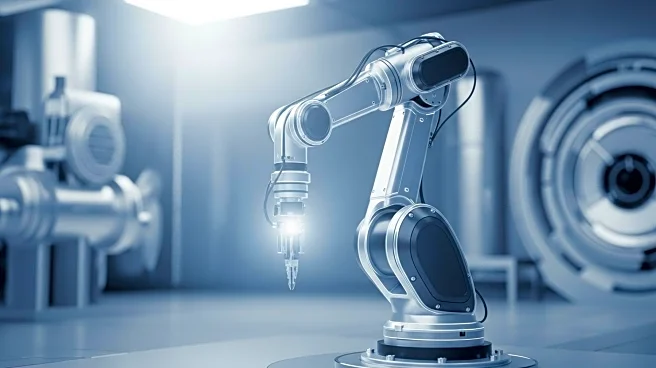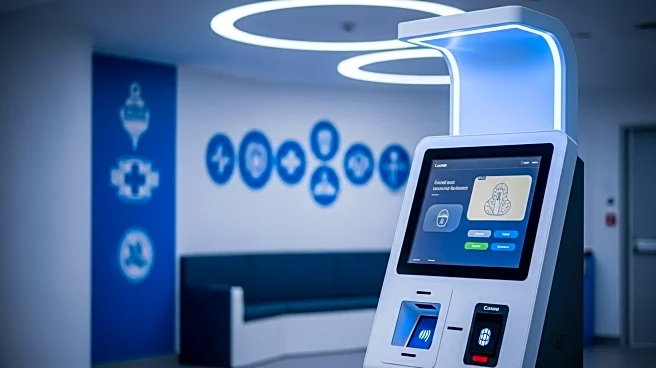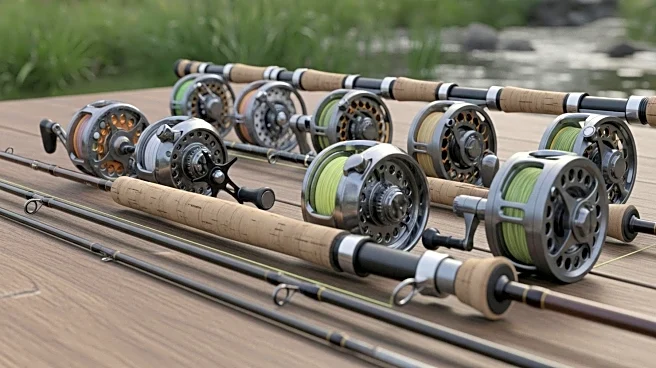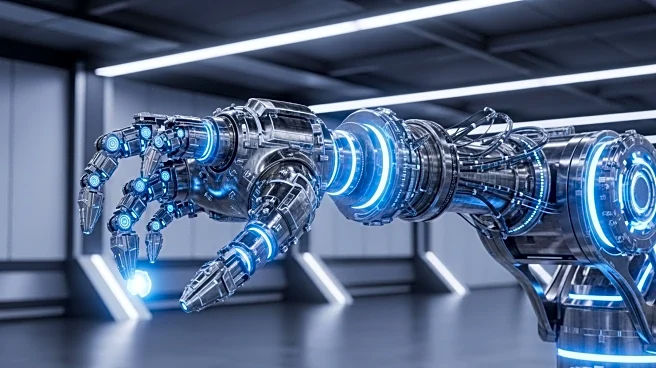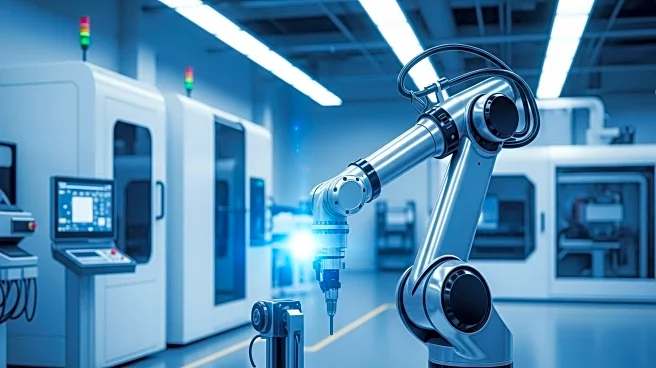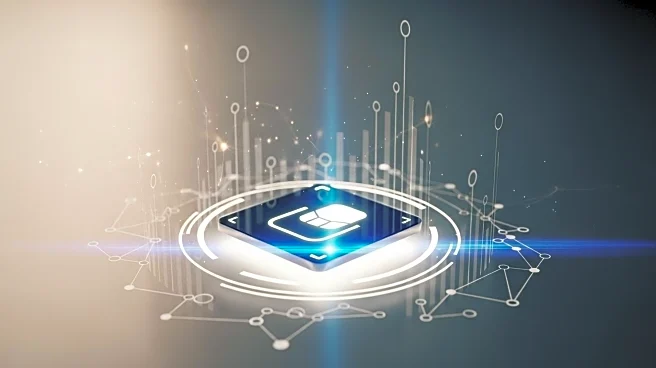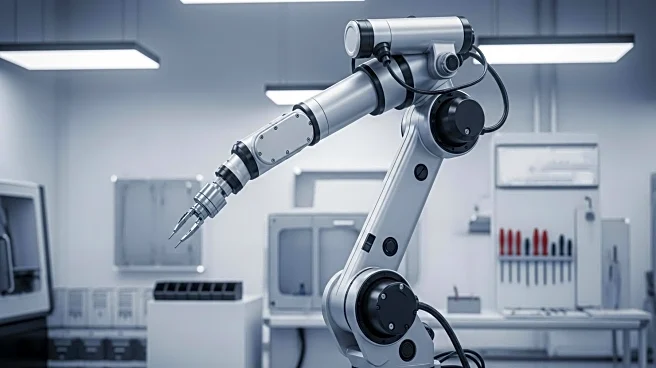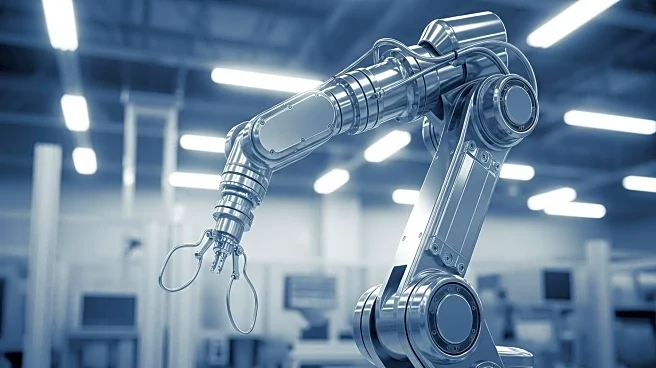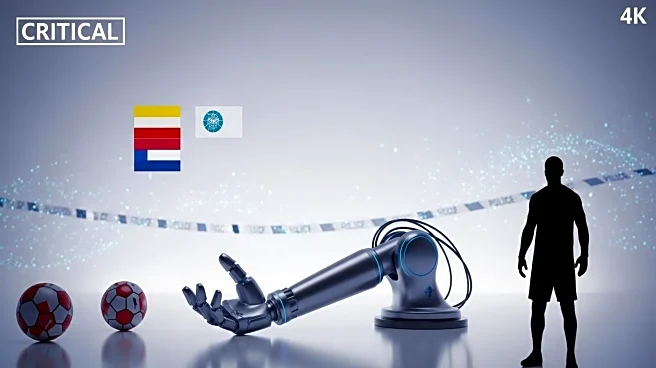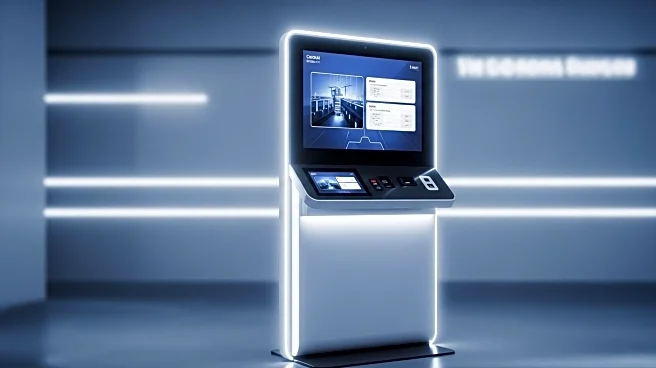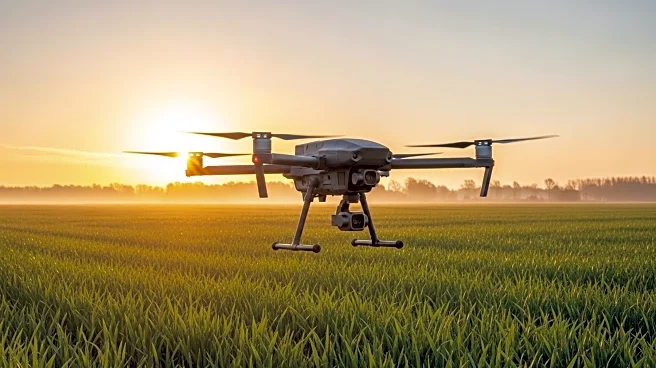What is the story about?
What's Happening?
Dürr, a prominent player in the industrial robotics sector, has revised its financial targets for 2025 due to a decrease in project demand. The company has lowered its order-intake target from €4,300-€4,700 million to €3,800-€4,100 million. In response to these challenges, Dürr plans to eliminate approximately 500 administrative positions by the end of 2026 and absorb €40-50 million in restructuring provisions in the second half of 2025. This restructuring is expected to yield annual savings of about €50 million starting in 2027. Despite the broader industrial robotics market showing growth, with projections of a compound annual growth rate of 9.9% through 2030, Dürr's earnings before tax after extraordinary effects could fall into negative territory, between -1% and 0%. The company is facing a strategic inflection point as it navigates a saturated market with increasing competition from Chinese and Indian firms.
Why It's Important?
The adjustments by Dürr highlight the challenges faced by established players in the industrial robotics market, which is experiencing a shift from high-margin growth to more competitive dynamics. The market saturation, driven by new entrants and aggressive pricing strategies, particularly from Chinese and Indian companies, is putting pressure on legacy firms. This situation could lead to a shakeout where only those with cost advantages or niche specializations survive. The strategic decisions by companies like ABB, which recently sold its robotics division to SoftBank, indicate a cautious approach to the faltering segment. For Dürr, the need to pivot towards software, intelligence, and AI-augmented robotics is crucial to avoid the commoditization trap and maintain its market position.
What's Next?
Dürr faces several strategic options, including specializing in premium niches, merging or being acquired, or pivoting towards software and AI-augmented robotics. The company could focus on high-end applications where price pressure is lower or consider a sale to a foreign buyer, similar to Kuka's acquisition by Chinese interests. The proceeds from its planned environmental-technology divestment may provide the financial strength needed for reinvention. However, timing is critical, as delays in pivoting could lead to structural decay faster than recovery is possible.
Beyond the Headlines
The industrial robotics market is undergoing a maturation cycle, with fewer hardware winners and more stratified segmentation. The era of uniform expansion is over, and companies must adapt to survive. For Dürr, transitioning from being a robot seller to a robotics orchestrator is essential to navigate the competitive landscape. The company's ability to leverage its engineering roots and focus on system intelligence could determine its future success.
AI Generated Content
Do you find this article useful?
